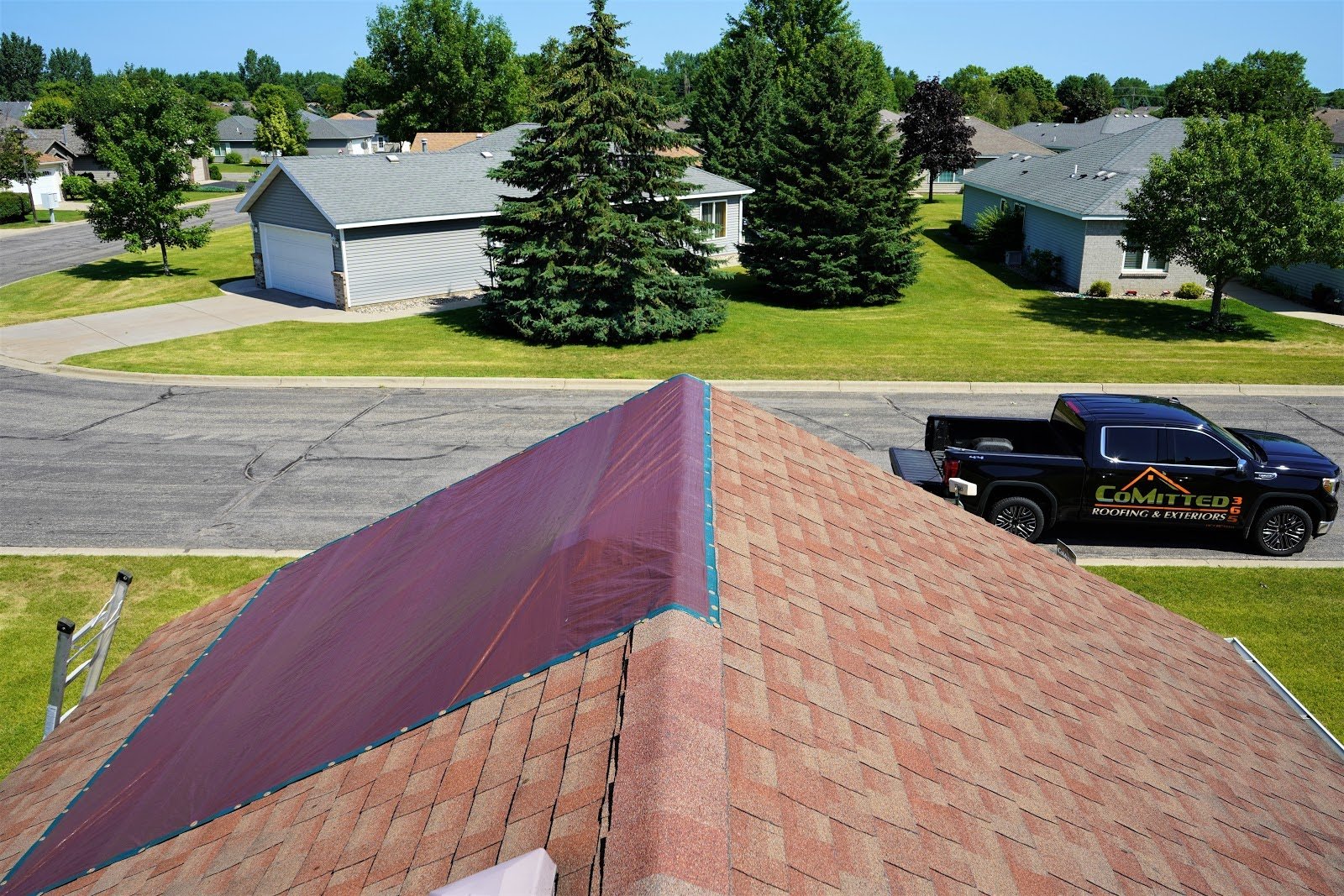Well, the Midwest winter storm season is here. As we know all too well, severe winter weather storms can quickly cause extensive roof damage, putting you in a tricky spot.
If you experience ice or snowstorm damage, you’ll want to file a claim with your insurance company. Not sure where to start? That’s okay! We’ll provide essential steps they should take to ensure a smooth storm damage insurance claim.
Before you file a claim
Doing things correctly can help you avoid sabotaging your storm damage insurance claim.
First things first, take photos. Photos will come in handy later, so get them while you can. Preserve any damaged property so you can use it as evidence for the insurance company. Evidence that directly supports your storm damage insurance claim makes it much more likely to be successful.
Then, jump into action. Stop the damage from getting worse by implementing temporary emergency repairs. Not only do you want to protect your home, but the instance company will want to see that you acted promptly and responsibly. Call a trustworthy local professional roofing company to help.
A quick note about homeowners insurance: Homeowner’s insurance policies cover damage from accidental and natural disasters, not anything caused by lack of maintenance, repair, or aging. So many nuances and variables depend on your policy and provider – but there’s an excellent summary overview here if you’d like to learn more before you review, renew, and/or revise your policy.
Filing a storm damage insurance claim
If your roof needs repair after a snow or ice storm, these tips can help you navigate the insurance claim process smoothly.
1. Know your policy + coverage. Insurance policies are often a set-it-and-forget-it situation. Some policies set higher deductibles for areas at increased risk for certain disasters (in Minnesota, this could be hail storms or tornadoes), in which case additional insurance coverage is available to help protect your home. Here’s a quick checklist to understand your policy:
- What is your deductible?
- Do you live in an area with exclusions? If yes, do you have additional coverage for that exclusion?
- Notes about your roof’s age. Its age can impact provided coverage. Circle any relevant notes you see in the fine print.
- Notes about your roof’s material. Generally, this is more related to the cost of your policy. Some policies note they won’t cover cosmetic repairs.
- Is there a time limit on when you can submit claims?
2. Talk to a professional about your claim. Deciphering a roof insurance claim filled with industry terms can be complicated without a legal background. Have someone experienced read through your homeowner’s policy to align your claim with what’s covered.
3. Be timely. As soon as you can, contact your provider to submit your claim so you don’t miss the submission timeline if there is one. Not only that, but the damage is easiest to inspect and identify when it is recent.
4. Keep a paper trail of everything. Is your policy available on paper? What about your original roof specs, receipts, warranties, etc.? Your reliable estimate? Your email or mail communication about your claim with your provider, inspector, or roofing company? Ask for anything discussed on the phone to be confirmed via email.
5. Document before, during, and after the repair. Pre-damage photos of your roof showcase the extent of the damage and help if concerns about the quality of your roof come up. Put together documentation of your roof’s installation date and repairs or maintenance you’ve done. The more detail you have, the better you can prove your case should it come into question.
Then, during and after the repair, keep up with documentation regarding ongoing roof repair, maintenance, and future damage control.
6. Account for water and water damage. If water leaks into your home, you’ll probably have to deal with mold. Don’t forget to include that in your claim!
7. Schedule an adjuster visit. They’ll evaluate the damage to create a figure for the insurance company. Make sure you agree with their assessments before signing off on it.
8. Read through your claim carefully before submitting it. Have you left anything out? Are all the details captured accurately? Don’t let insurance companies use missing or incorrect information against you!
Bonus Tip: Keep Up Regular Roof Maintenance
Insurance claims for a roof repair can be tricky business. If there is a reason to suspect a natural disaster didn’t entirely cause your roof damage – the insurance company will find it. Invest in regular maintenance and log it accordingly with notes and photos. Leave little room to question the quality of your roof and the extent of the damage your claim should cover.

How CoMitted 365 guides you through the process
Navigating a storm damage insurance claim can be complex. The contractors at CoMitted 365 team are more than happy to guide you through the process. We have years of experience working with insurance claims processes and paperwork and are happy to share our expertise with our clients!
Rely on our expertise
We hope you never find yourself in this scenario, but if you do, hopefully, this information makes the process a little easier. Need assistance with a storm damage insurance claim? Give us a call at (320) 828-7244 or fill out our online form. We look forward to helping you out!


